22 Stadiums with Revolutionary Designs Shaping the Future of Sports
Stadiums have evolved far beyond simple sports venues—they are now cutting-edge marvels of architecture, technology, and sustainability, redefining the way we experience live events. No longer just places to watch a game, today’s stadiums are immersive, multi-purpose destinations designed to integrate digital innovation, eco-friendly engineering, and fan-first experiences into breathtaking spaces. Whether powered entirely by renewable energy, equipped with retractable fields, or enhanced with augmented reality, these stadiums push the boundaries of what’s possible. In this expanded edition, we’ve gone beyond our original selection, uncovering 22 extraordinary stadiums that challenge expectations and set new global standards. From sky-high viewing decks to underwater acoustics, from floating arenas to stadiums built in extreme landscapes, each of these venues is a testament to human ingenuity and ambition. As cities around the world invest in smarter, greener, and more technologically advanced venues, the stadiums on this list aren’t just shaping the future of sports—they’re shaping the future of live entertainment itself.
1. Allegiant Stadium – The Black Fortress of the Future (Las Vegas, USA)
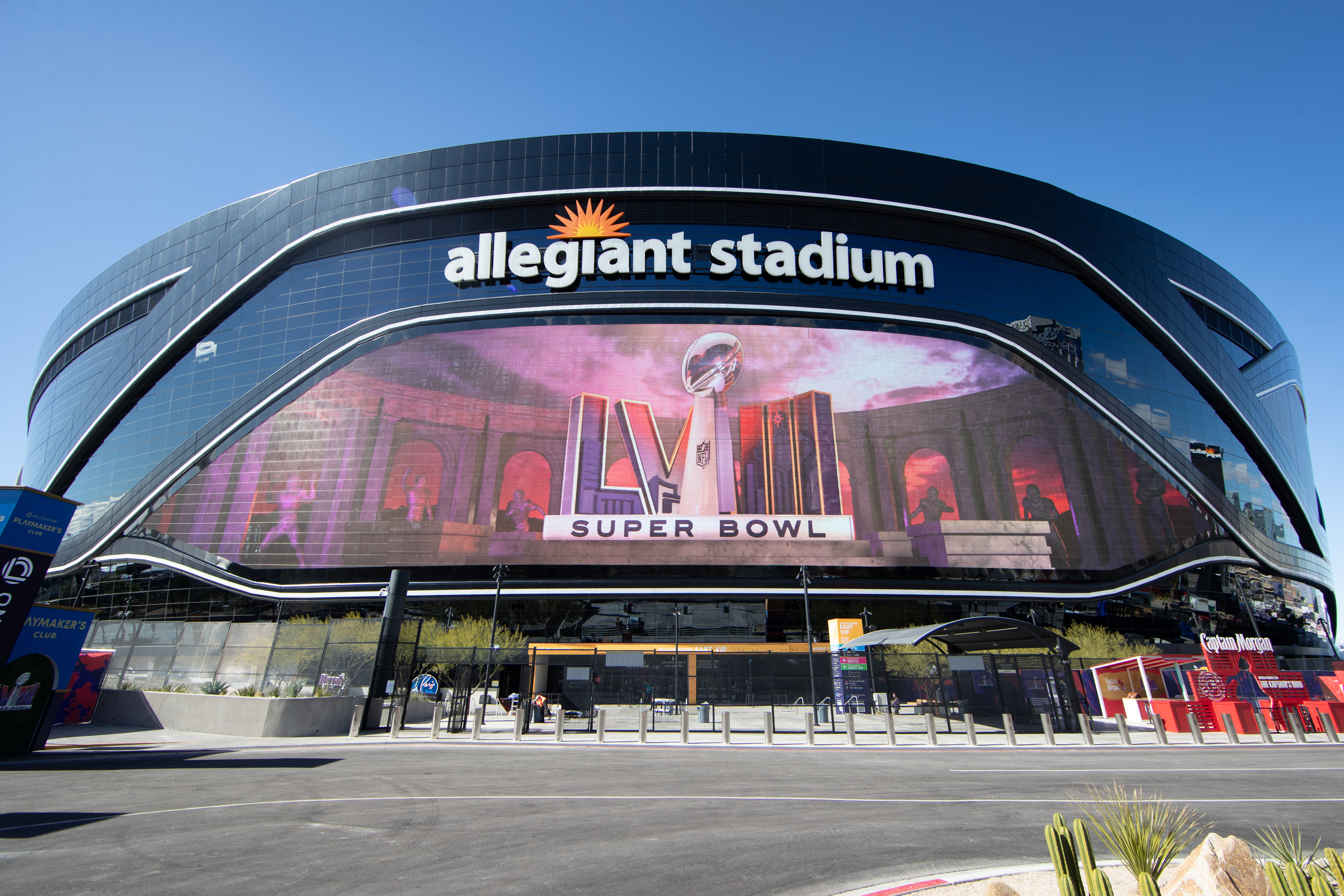
Nicknamed the "Death Star" due to its sleek, futuristic design, Allegiant Stadium in Las Vegas is one of the most advanced sports venues in the world. Home to the NFL’s Las Vegas Raiders, this $1.9 billion marvel combines cutting-edge technology with a commitment to sustainability. Its translucent ETFE roof allows natural light while keeping out the desert heat, and its climate-controlled interior ensures comfort for fans despite the scorching Las Vegas temperatures. What makes Allegiant Stadium truly unique is its retractable field—a state-of-the-art natural turf system that slides in and out of the stadium. This allows the stadium to transform for concerts, conventions, and other sports events with minimal downtime. Additionally, its massive 27,600-square-foot video screen, advanced Wi-Fi network, and mobile food ordering system enhance the next-generation fan experience, making it one of the most technologically integrated stadiums ever built.
2. The National Stadium – Japan’s Wooden Masterpiece (Tokyo, Japan)
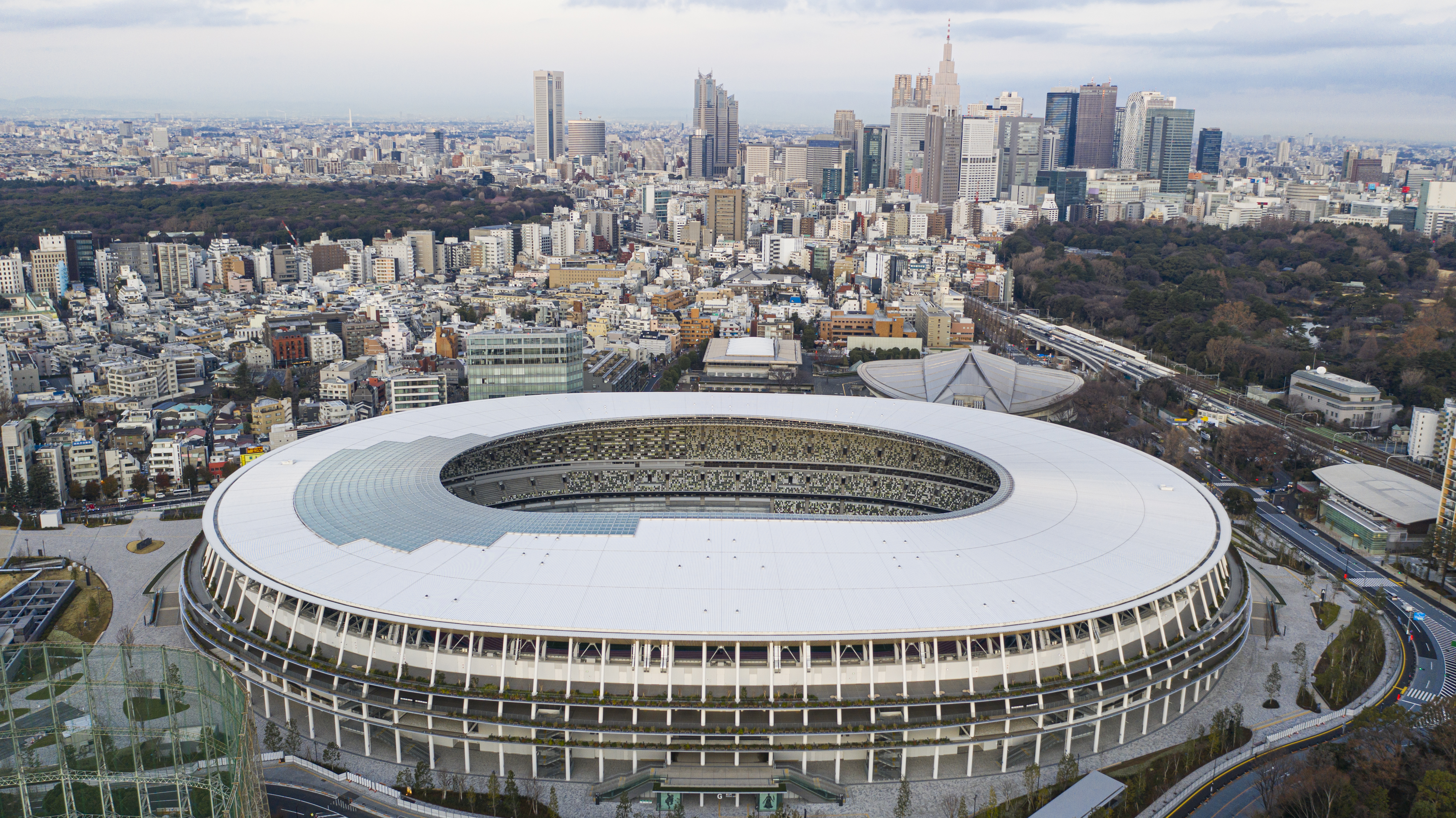
Designed for the Tokyo 2020 Olympics, Japan’s National Stadium is a masterpiece of sustainable architecture, combining traditional Japanese wood craftsmanship with cutting-edge technology. Designed by Kengo Kuma, the stadium incorporates 70,000 cubic feet of timber sourced from all 47 prefectures of Japan, blending the venue into the natural landscape. The open-air design minimizes energy consumption, using natural ventilation rather than air conditioning. Its commitment to sustainability makes it one of the most environmentally conscious stadiums in the world.
3. Climate Pledge Arena – The World’s First Carbon-Neutral Stadium (Seattle, USA)

Seattle’s Climate Pledge Arena is the world's first net-zero carbon stadium, setting a new gold standard for sustainability. Home to the NHL’s Seattle Kraken and the WNBA’s Seattle Storm, this arena was designed with a commitment to eliminating fossil fuel use, reducing waste, and prioritizing renewable energy sources. Its innovative rain-to-rink system harvests Seattle’s abundant rainfall to create ice for hockey games. Meanwhile, solar panels and an advanced energy recovery system provide power, and the arena bans single-use plastics, making it one of the most environmentally responsible sports venues ever built. With corporations and leagues prioritizing sustainability, Climate Pledge Arena serves as a blueprint for future eco-conscious stadiums worldwide.
4. The Al Janoub Stadium – Inspired by the Desert (Al Wakrah, Qatar)

Designed by the late Zaha Hadid, the Al Janoub Stadium in Qatar is an architectural masterpiece inspired by traditional dhow boats, reflecting the country’s maritime history. Built for the 2022 FIFA World Cup, its ultra-modern cooling technology allows the stadium to maintain comfortable temperatures even in the harsh Qatari heat. Al Janoub’s retractable roof can shade the entire playing field, while its energy-efficient air circulation system ensures that both players and fans remain cool. The futuristic curves of the stadium make it one of the most visually stunning sports arenas, proving that functionality and aesthetic design can coexist beautifully.
5. Tottenham Hotspur Stadium – The First Stadium with a Retractable NFL Pitch (London, UK)

The Tottenham Hotspur Stadium is the first in the world to feature a fully retractable, NFL-compliant artificial turf field beneath its main soccer pitch. This innovation allows the stadium to host Premier League matches and NFL games seamlessly, transforming overnight with minimal disruption. The design also prioritizes fan experience, featuring the largest single-tier stand in the UK, standing-room viewing areas, and an in-house brewery. Additionally, its cutting-edge acoustics enhance the crowd atmosphere, making it one of the loudest stadiums in Europe.
6. The Estadio BBVA – The Glass Fortress (Monterrey, Mexico)

Often called “The Steel Giant”, Estadio BBVA is one of Latin America’s most stunning modern stadiums. Located in Monterrey, Mexico, it boasts a breathtaking view of the Cerro de la Silla mountain range, integrating nature into its design. The curved glass façade allows natural ventilation and stunning panoramic city views, while the roof’s solar panel integration contributes to sustainability. This stadium proves that design, technology, and natural beauty can coexist harmoniously.
7. The Panathenaic Stadium – The Ancient Marvel (Athens, Greece)
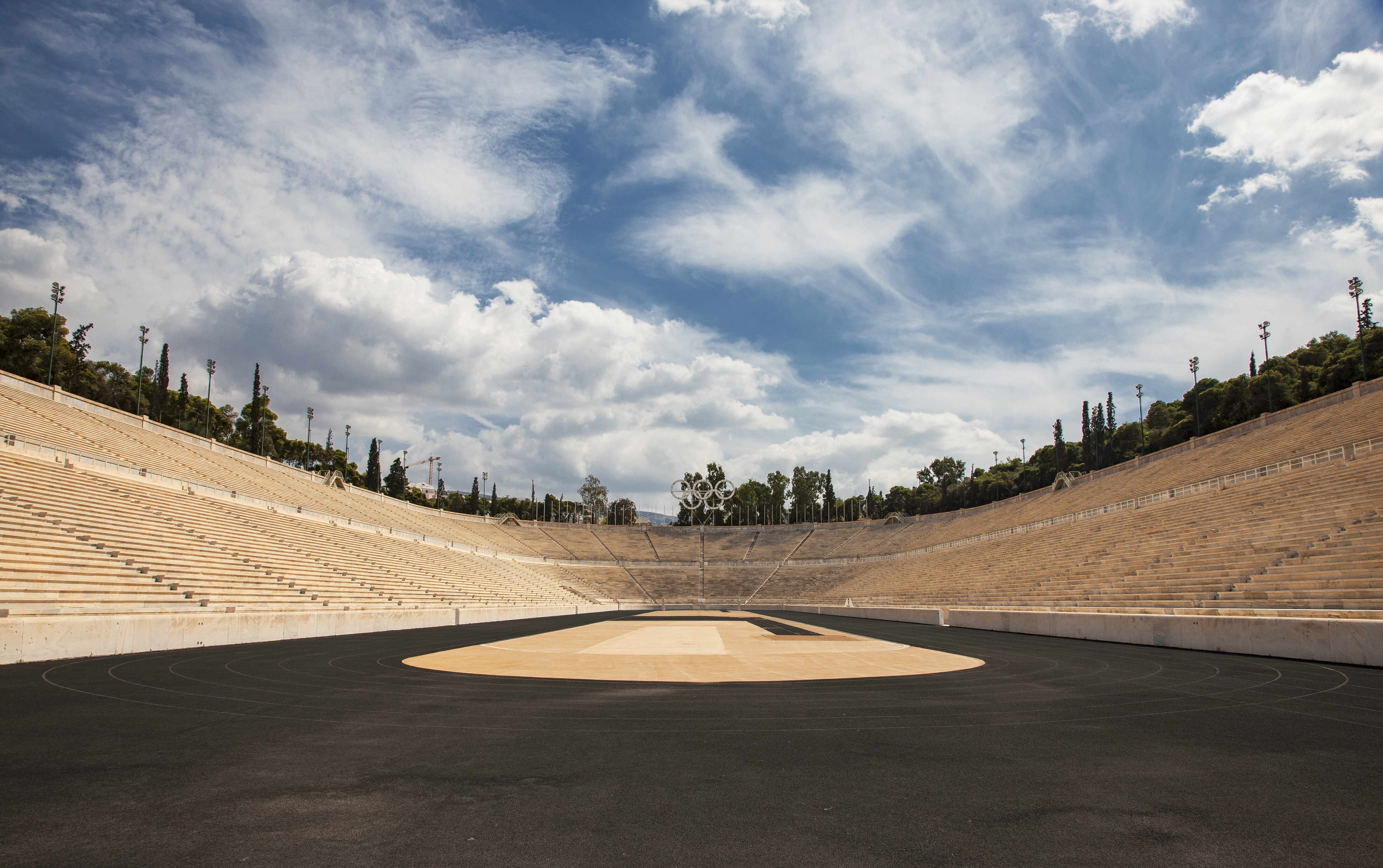
While modern stadiums push technological boundaries, The Panathenaic Stadium remains an iconic historical masterpiece. Originally built in 330 BC, this all-marble stadium has been continuously restored and repurposed for major sporting events, including the first modern Olympic Games in 1896. Its endurance through centuries showcases the timelessness of intelligent stadium design. While modern stadiums may rely on high-tech materials and futuristic aesthetics, The Panathenaic Stadium proves that architecture built with longevity and adaptability in mind can remain relevant for millennia.
8. Moses Mabhida Stadium – The Stadium with a Skywalk (Durban, South Africa)
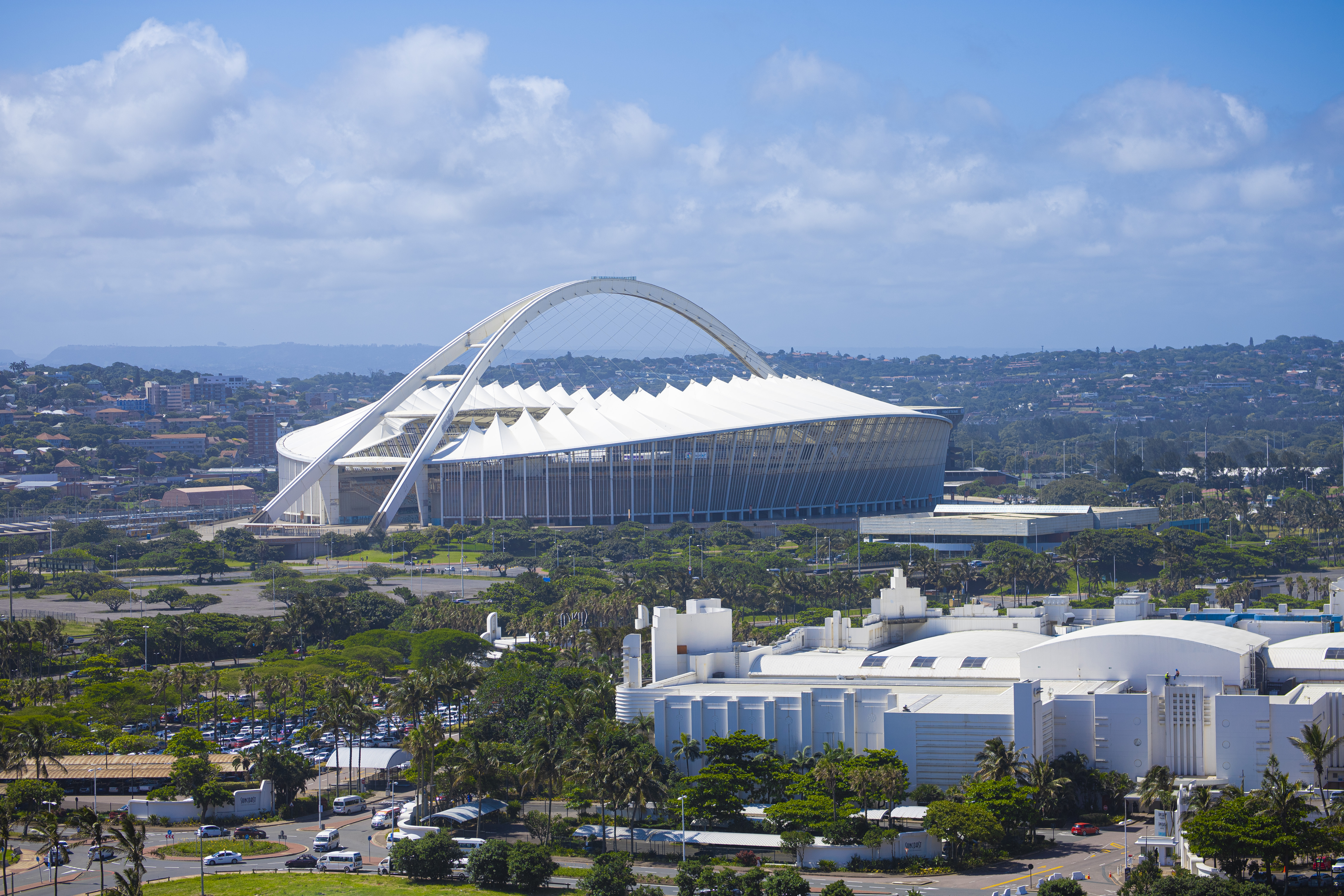
Built for the 2010 FIFA World Cup, Moses Mabhida Stadium is a multi-functional architectural wonder that stands as one of South Africa’s most recognizable landmarks. Designed to reflect the unity of a diverse nation, its massive archway, which spans the entire stadium, represents the concept of a rainbow nation, symbolizing togetherness and progress in post-apartheid South Africa. What makes this stadium truly unique is its adventure-filled design. The iconic arch, soaring 106 meters above the pitch, is more than just a structural element—it offers visitors the SkyCar experience, where they can ascend to the top for breathtaking 360-degree views of Durban’s coastline and skyline. Thrill-seekers can also take part in the Big Swing, the world's largest stadium swing, which sends participants plunging 80 meters down in an adrenaline-pumping freefall inside the stadium bowl.
9. FNB Stadium – Africa’s Largest and Most Iconic Venue (Johannesburg, South Africa)
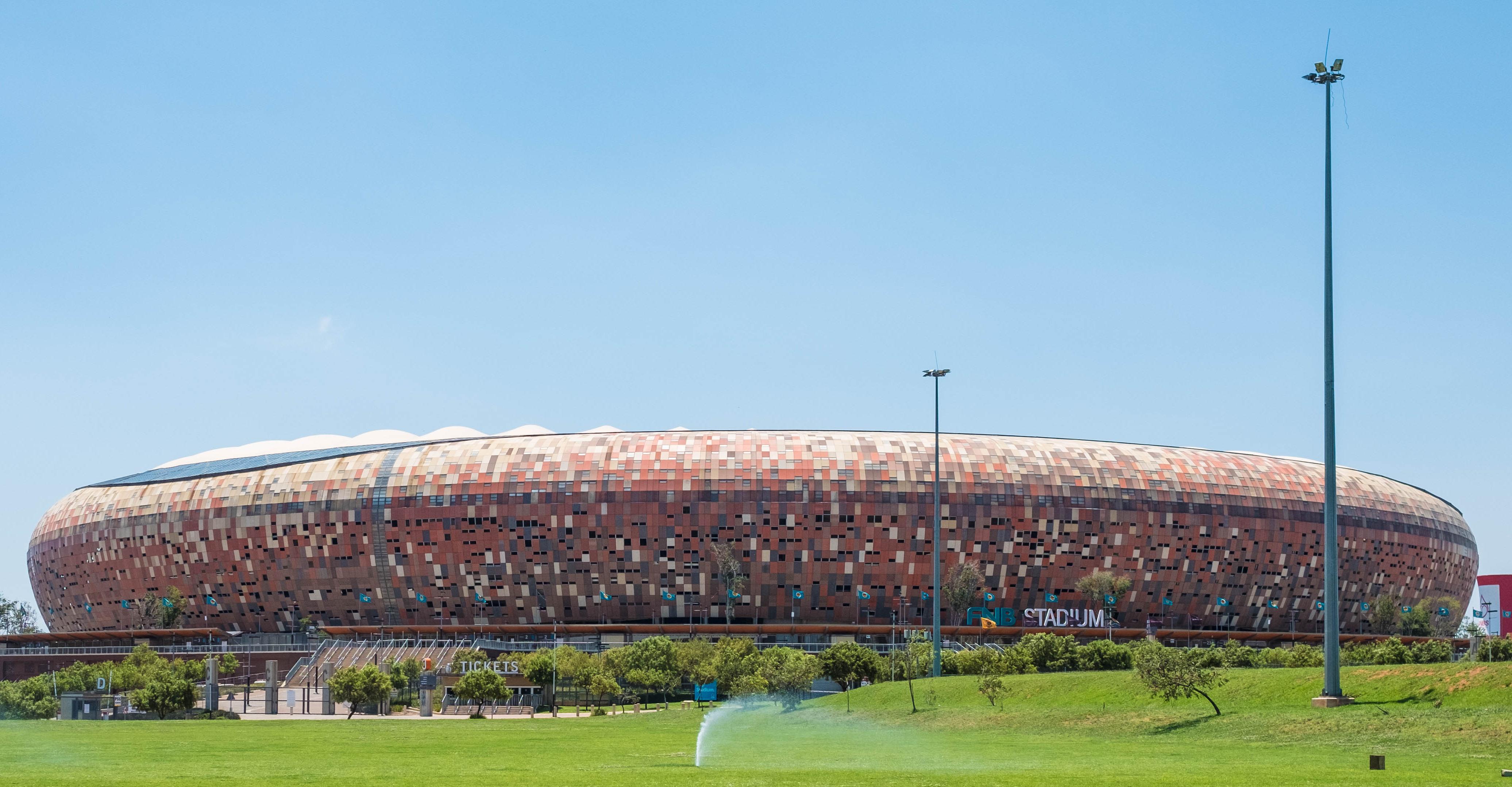
Often referred to as “Soccer City”, FNB Stadium is the largest stadium in Africa, with a seating capacity of 94,736. Its remarkable design takes inspiration from the traditional African calabash, a clay pot commonly used for brewing beer and communal gatherings, symbolizing heritage, unity, and shared experiences. Located in Soweto, Johannesburg, this stadium is more than just a sports venue—it is a symbol of South Africa’s history and transformation. FNB Stadium is renowned for hosting some of the most significant events in the country’s history. It was the site of Nelson Mandela’s first speech after his release from prison in 1990, drawing over 100,000 people, and later, in 2013, it hosted his memorial service, attended by world leaders and dignitaries. This stadium played a pivotal role in the 2010 FIFA World Cup, where it hosted both the opening and final matches, making it a global icon in the world of football.
10. Mercedes-Benz Stadium – The 360-Degree Experience (Atlanta, USA)
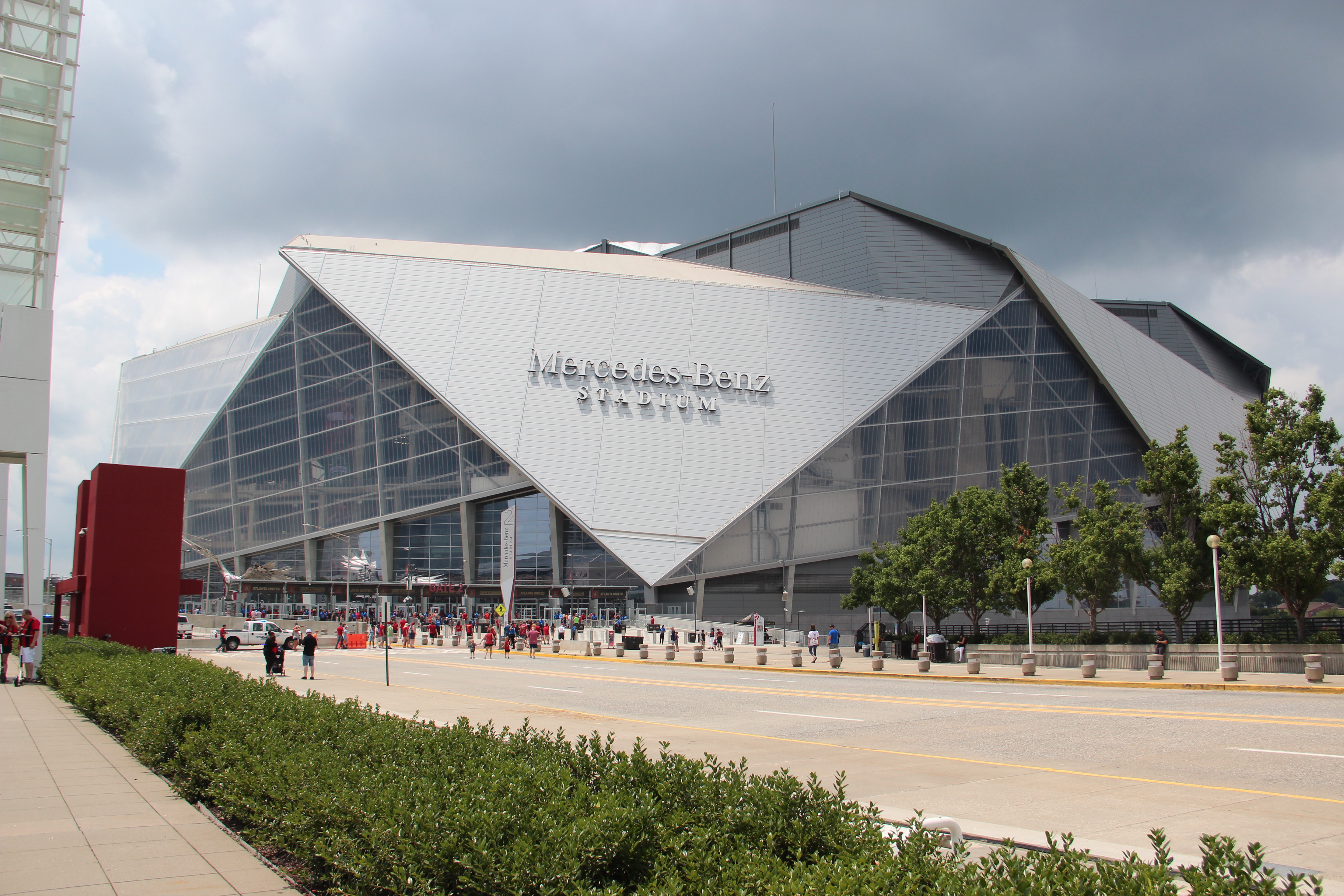
As the home of the NFL’s Atlanta Falcons and MLS’s Atlanta United, Mercedes-Benz Stadium in Atlanta, Georgia, represents the future of smart stadiums, blending cutting-edge technology, sustainability, and fan-first experiences into a revolutionary sports and entertainment venue. Opened in 2017, it is one of the most advanced stadiums in the world, redefining what a modern sports venue can offer. Its retractable roof, inspired by a camera lens, consists of eight interlocking panels that open and close in under 10 minutes, allowing for seamless adaptation to weather conditions. Unlike traditional dome stadiums, this design gives fans the feeling of being outdoors while still offering protection from the elements when necessary. One of the stadium’s most groundbreaking features is its 360-degree halo video board, which encircles the roof structure, offering an uninterrupted, immersive viewing experience for every spectator. At 58 feet tall and 1,100 feet in circumference, it is the largest LED display in professional sports, ensuring that no fan misses a second of the action.
11. Optus Stadium – The Digital Age Stadium (Perth, Australia)
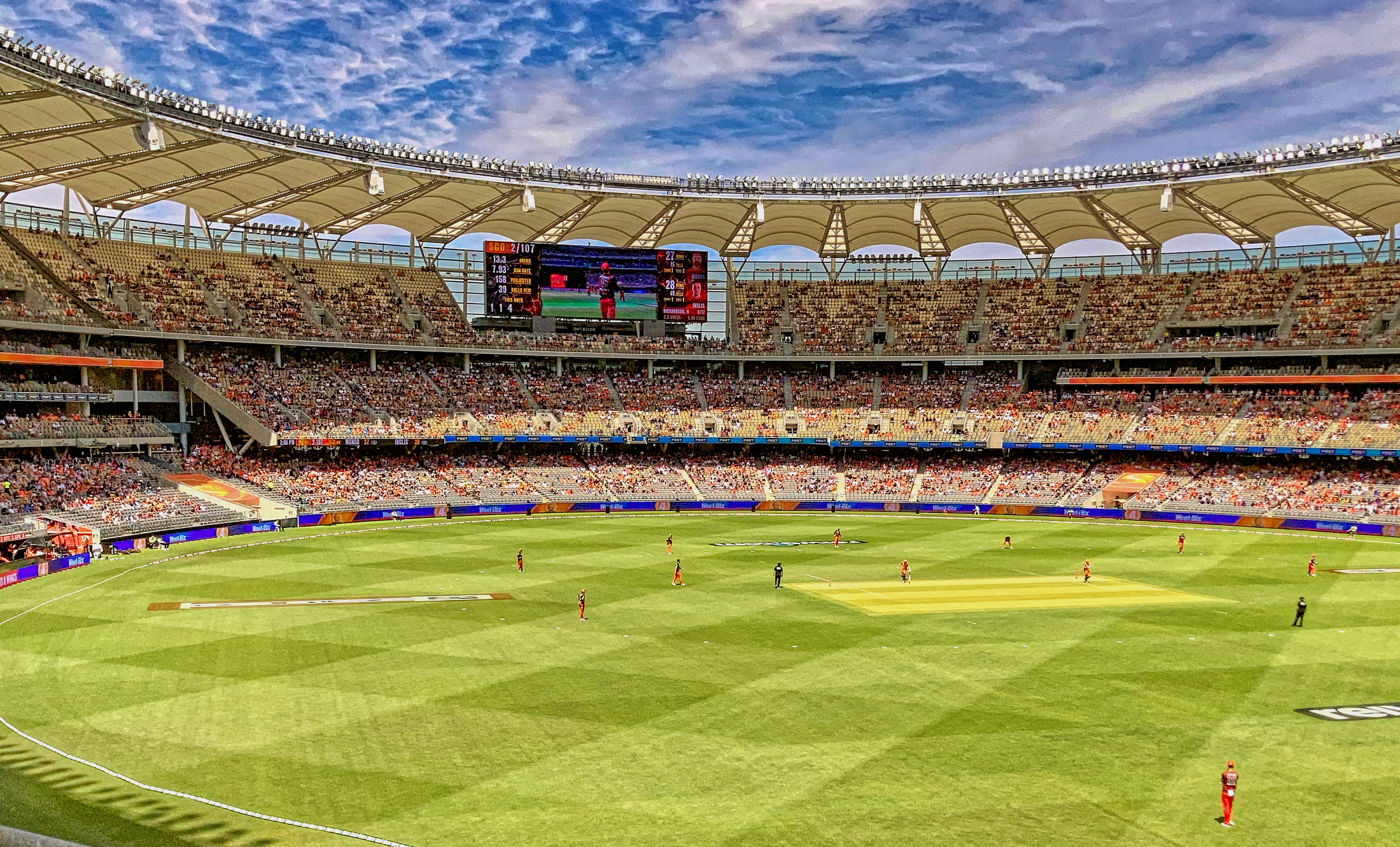
Nestled along the banks of the Swan River in Perth, Australia, Optus Stadium is one of the most technologically advanced stadiums in the world, offering fans an unparalleled digital and entertainment experience. Opened in 2018, it was designed with fan engagement and high-tech integration at its core, ensuring it remains one of the most connected stadiums on the planet. The stadium boasts 5G connectivity, allowing spectators to stream, share, and interact with the game like never before. Augmented reality (AR) technology enables fans to view player stats, real-time game data, and exclusive content simply by pointing their smartphones at the field. Additionally, Optus Stadium features immersive digital displays, intelligent crowd flow management, and an integrated smartphone app for ticketing, ordering food, and navigating the venue.
12. Allianz Stadium – The Revolutionary Circular Stadium (Turin, Italy)

As the home of Juventus FC, Allianz Stadium in Turin is one of the most innovative and sustainable football stadiums in the world. Opened in 2011, it was one of the first European stadiums to fully embrace sustainability, setting new standards for eco-friendly sports venues. Unlike older stadiums that focus solely on capacity, Allianz Stadium was designed for intimacy and engagement. Its seating is steep and close to the pitch, maximizing the electric atmosphere and ensuring fans feel like they’re right in the action. The stadium’s fully enclosed circular shape enhances acoustics, making it one of the loudest stadiums in Europe. In terms of sustainability, Allianz Stadium was built with zero waste goals in mind. It uses energy-efficient lighting, solar panels, and a natural ventilation system, drastically reducing its environmental impact. Additionally, rainwater collection systems help irrigate the pitch and surrounding green spaces.
13. SoFi Stadium – The Stadium of the Future (Inglewood, USA)
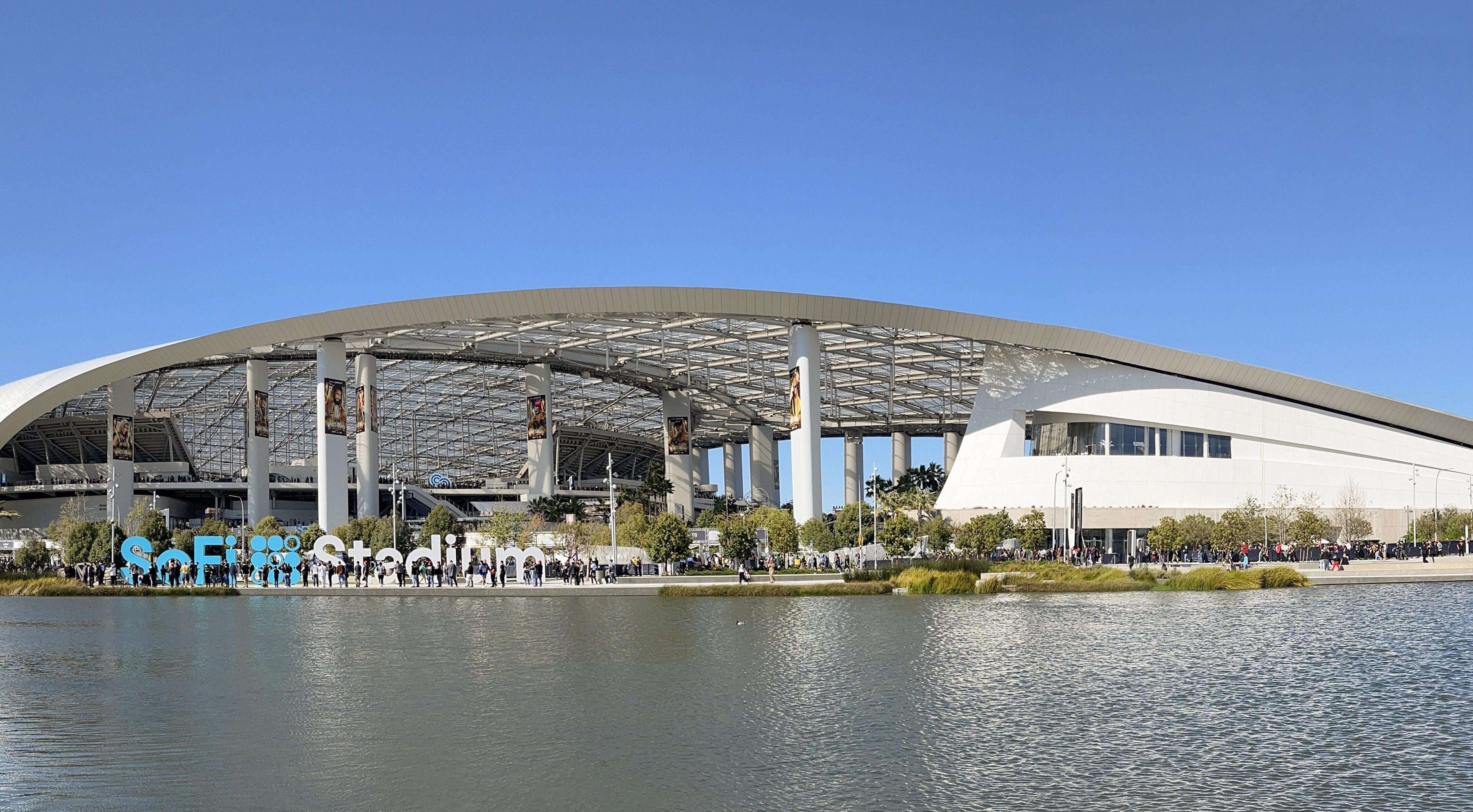
Home to the Los Angeles Rams and Los Angeles Chargers, SoFi Stadium is one of the most advanced sports venues ever built, with a price tag of $5.5 billion, making it the most expensive stadium in history. The stadium’s most striking feature is its massive, curved, semi-transparent roof, which allows natural light in while keeping fans comfortable. Unlike traditional domes, this structure also provides protection from rain while maintaining an open-air feel. Another major innovation is the Infinity Screen by Samsung, a huge 70,000-square-foot, double-sided video board that wraps around the entire stadium, ensuring that every seat has a perfect view of the action. Designed with climate-conscious technology, SoFi Stadium collects rainwater for irrigation, uses energy-efficient LED lighting, and integrates airflow strategies to reduce cooling costs. More than just a stadium, this venue is a multi-purpose entertainment hub, hosting concerts, esports events, and even the 2028 Olympic Games opening ceremony.
14. Estadio Omnilife – The "Volcano" Stadium (Guadalajara, Mexico)

Shaped like a volcanic crater, Estadio Omnilife (now known as Estadio Akron) is home to Club Deportivo Guadalajara (Chivas) and is one of Mexico’s most unique stadiums. Instead of towering grandstands or a conventional facade, the stadium is partially sunken into the earth, seamlessly blending into the landscape. Its grass-covered exterior slopes resemble a dormant volcano, creating an organic connection with its surroundings. The stadium was also built with sustainability in mind. Its permeable pavement reduces flooding risk, while the design allows for natural ventilation to keep temperatures comfortable. The futuristic roof structure, which appears to float above the stands, provides shade while allowing natural light to illuminate the field. With a modern, high-tech interior, Estadio Omnilife proves that stadium design can merge innovation with nature.
15. Stadion Gospin Dolac – The Cliffside Fortress (Imotski, Croatia)
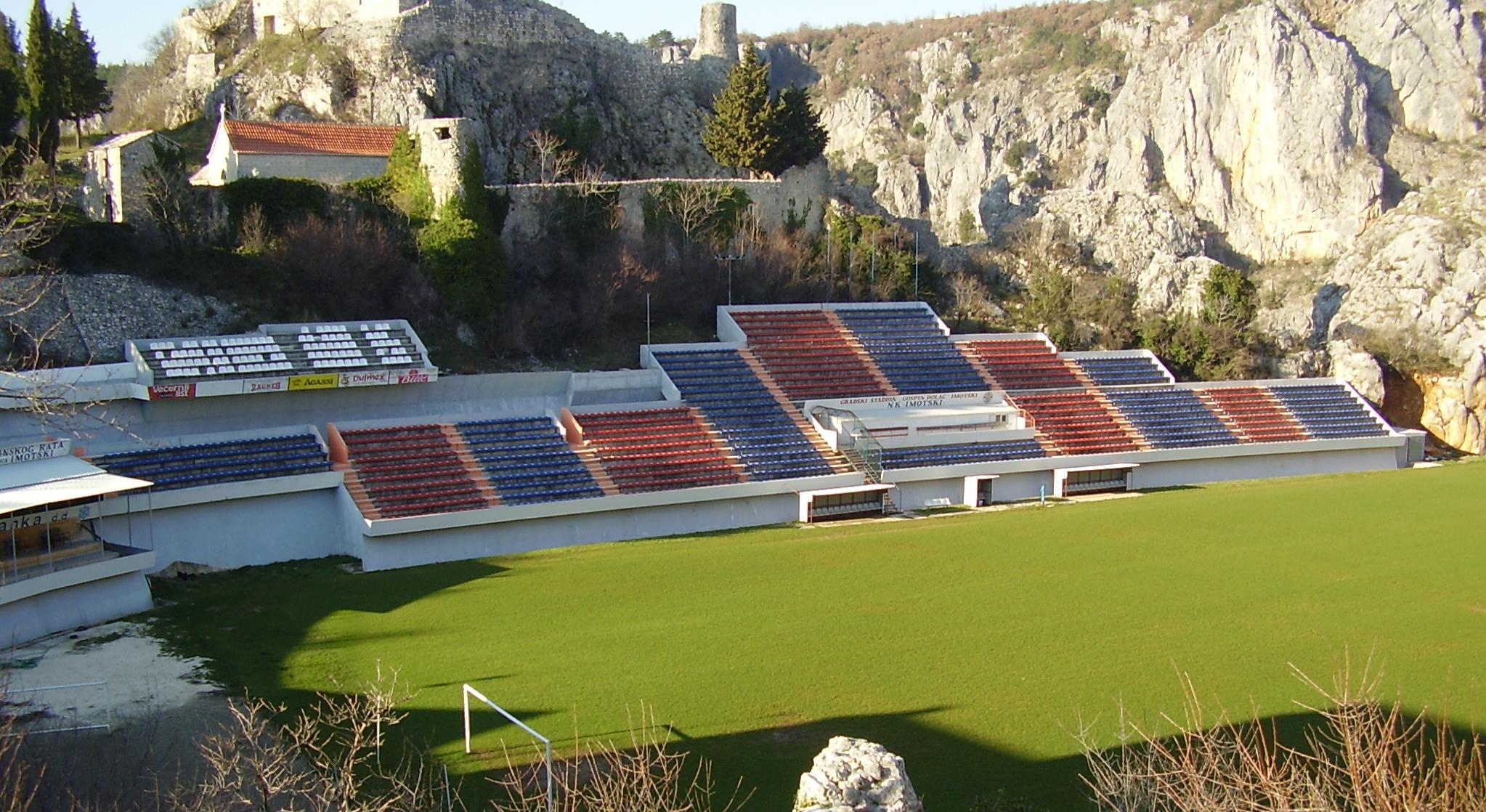
One of the most breathtaking stadiums in the world, Stadion Gospin Dolac sits on the edge of a dramatic cliff, overlooking a deep blue sinkhole lake. Located in the small Croatian town of Imotski, the stadium is surrounded by medieval fortress ruins, adding an ancient, almost mythical quality to its setting. Built in 1984, the stadium is home to NK Imotski, a local football club, and features a horseshoe layout with one open side offering stunning views of the Imotski Blue Lake. While small, seating just 4,000 spectators, the atmosphere here is intensely intimate—fans feel like they’re part of the rugged, mountainous landscape. Few stadiums in the world can match the sheer visual drama of Gospin Dolac.
16. Estádio Nacional de Brasília – The Solar-Powered Giant (Brasília, Brazil)
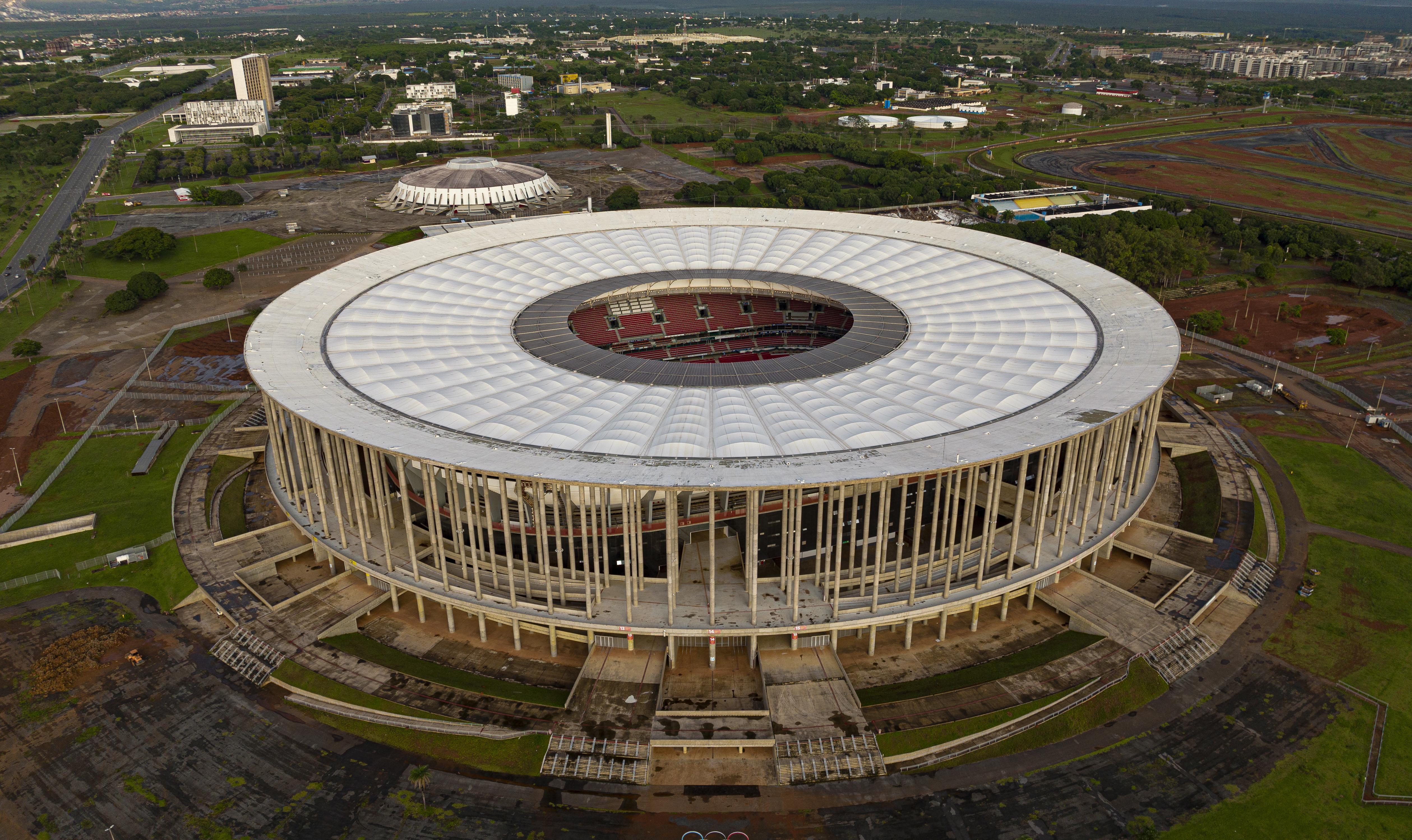
One of the most sustainable stadiums ever built, Estádio Nacional de Brasília was redesigned for the 2014 FIFA World Cup and remains a shining example of eco-conscious stadium engineering. The stadium is nearly 100% powered by solar energy, with a circular solar panel array covering its rooftop. It also features a rainwater collection system, which recycles and purifies water for irrigation and facilities, reducing consumption by nearly 40%. With a capacity of 72,800, it is one of South America's largest stadiums, regularly hosting international football matches, concerts, and even political events. Despite its massive size, the stadium is designed for minimal environmental impact, earning it a LEED Platinum Certification, the highest sustainability rating a building can achieve.
18. Estadio Municipal de Aveiro – The Stadium of Colors (Aveiro, Portugal)
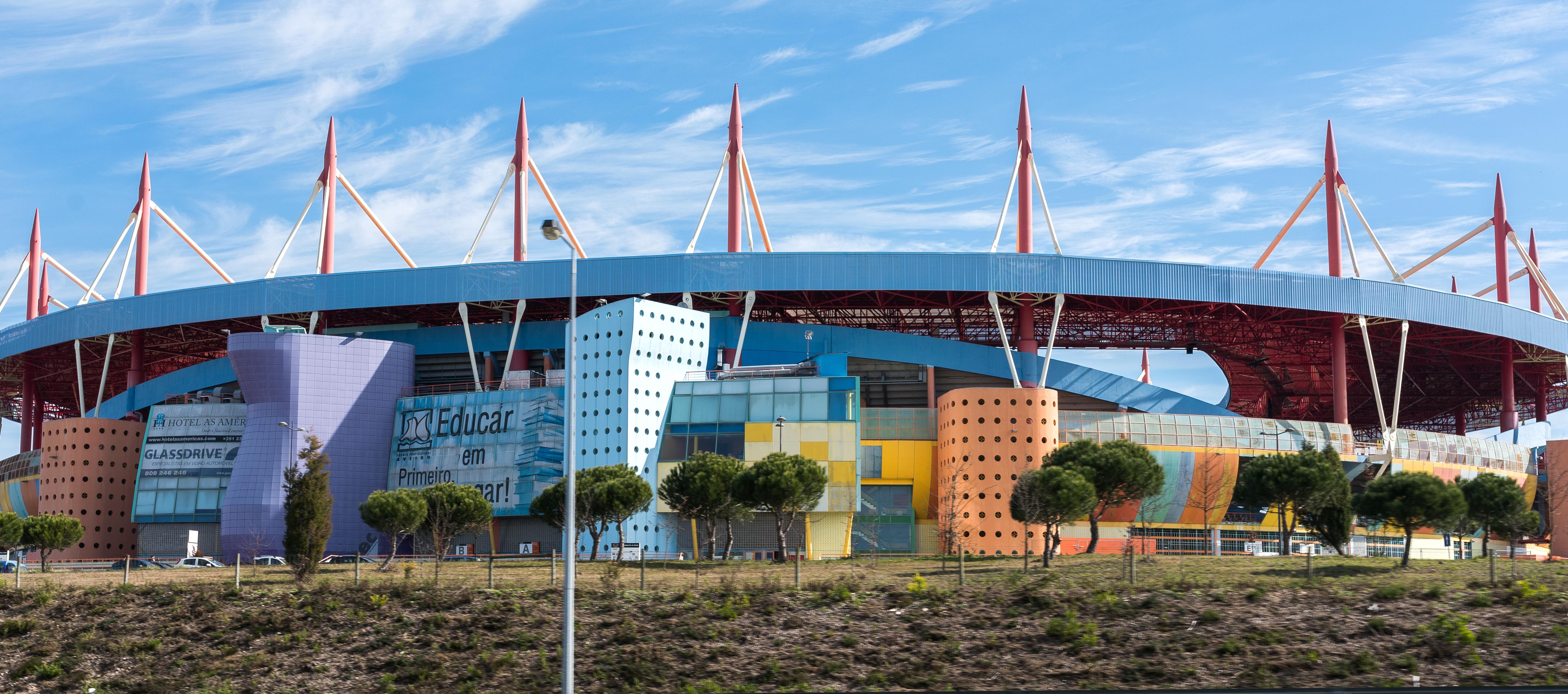
Designed by Tomás Taveira, Estadio Municipal de Aveiro is unlike any other stadium in the world due to its explosion of colors—each seat is painted in vivid shades of yellow, pink, red, blue, and green, creating a playful and almost surreal atmosphere. Built for Euro 2004, this 30,000-seat stadium is an architectural contrast to traditional stadium aesthetics, where uniform seating is the norm. Its design reflects Aveiro’s coastal and artistic heritage, with a curved, flowing roof inspired by ocean waves. While its main tenant, Beira-Mar FC, is a lower-division team, the stadium remains a favorite for neutral-site matches and international friendlies.
19. Stadion Kantrida – The Stadium in the Rock (Rijeka, Croatia)
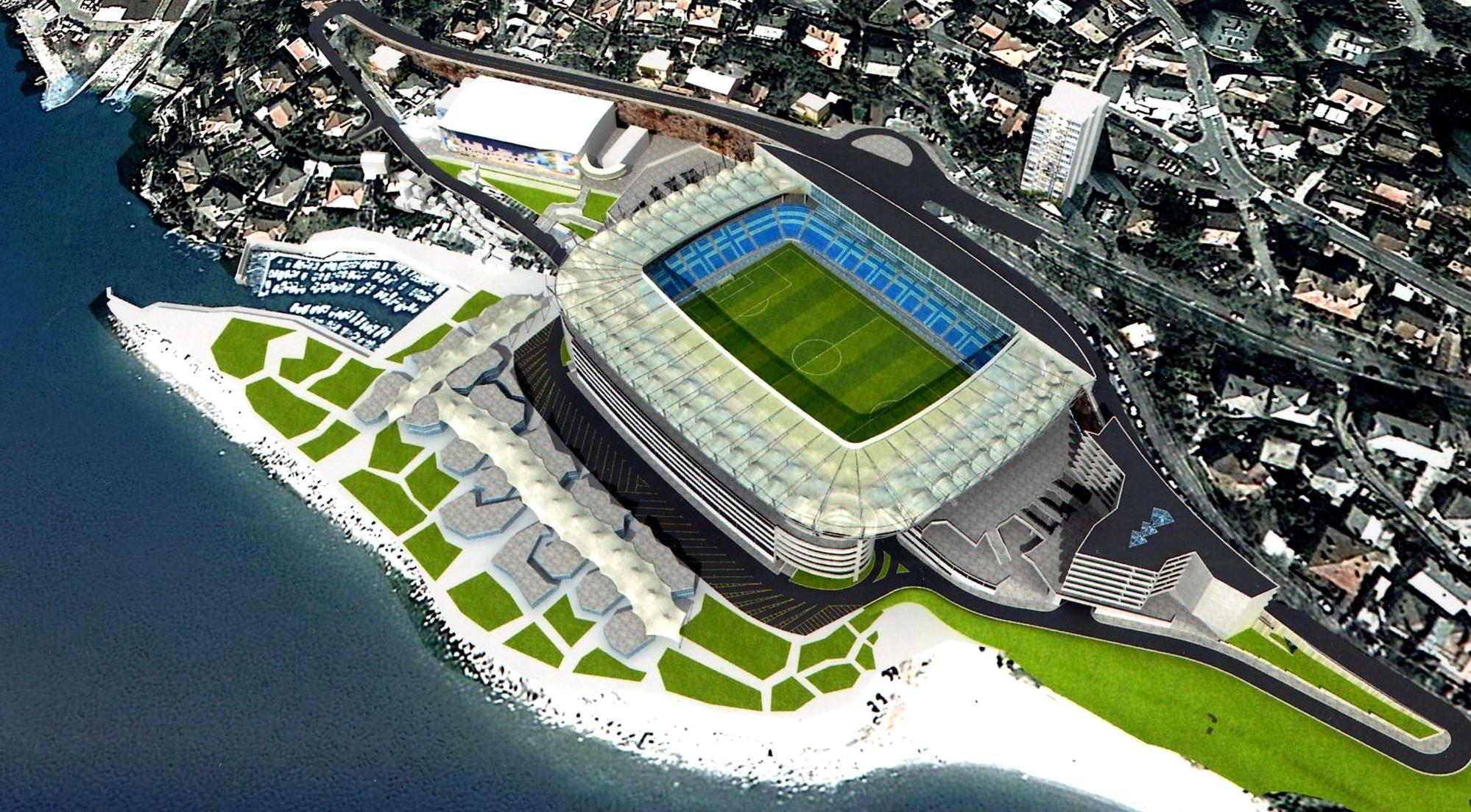
Perched between the Adriatic Sea and a massive limestone rock face, Stadion Kantrida in Rijeka, Croatia is one of Europe’s most visually striking sports venues. The stadium, home to HNK Rijeka, is partially carved into the cliffside, with towering rock walls creating a natural amphitheater effect. On the opposite side, the stands open up to a stunning sea view, making it one of the few stadiums in the world where fans can enjoy both football and breathtaking coastal scenery. Plans have been proposed to renovate and modernize the stadium while keeping its unique rock-hewn aesthetic, ensuring that its one-of-a-kind character is preserved.
20. Rheinpark Stadion – Football in Two Countries (Vaduz, Liechtenstein)
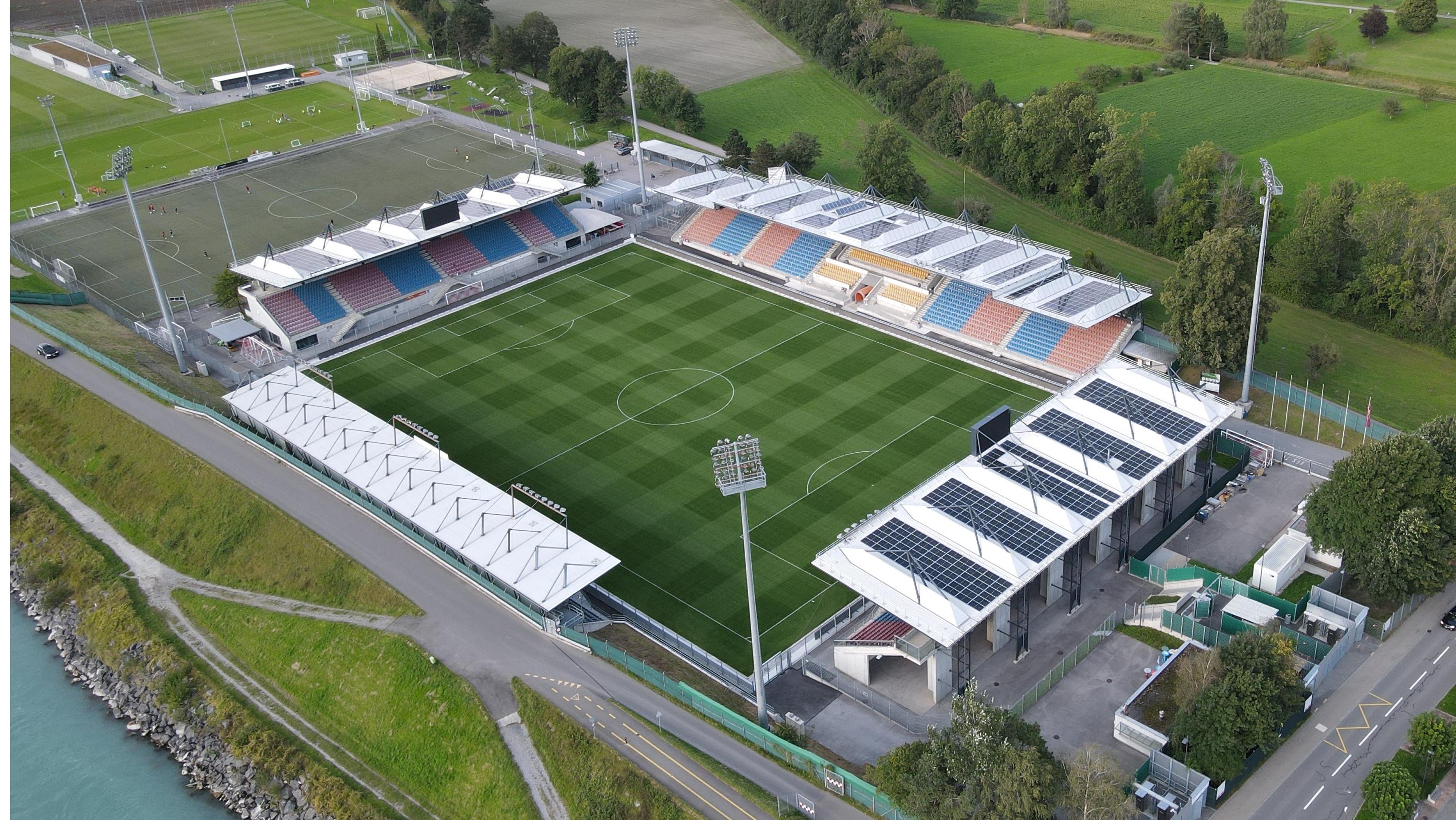
Located on the border of Switzerland and Liechtenstein, Rheinpark Stadion is one of the most unique stadiums in Europe due to its cross-border influence. Though officially in Vaduz, Liechtenstein, the stadium sits so close to Switzerland that fans can literally cross the border by walking outside the stadium. With a capacity of 7,500, it’s the home of FC Vaduz and the Liechtenstein national team. The stadium's setting, nestled between the Rhine River and the Alps, offers a spectacular natural backdrop, making it one of the most scenic national stadiums in the world.
21. Stadion PGE Narodowy – The Retractable Wonder (Warsaw, Poland)
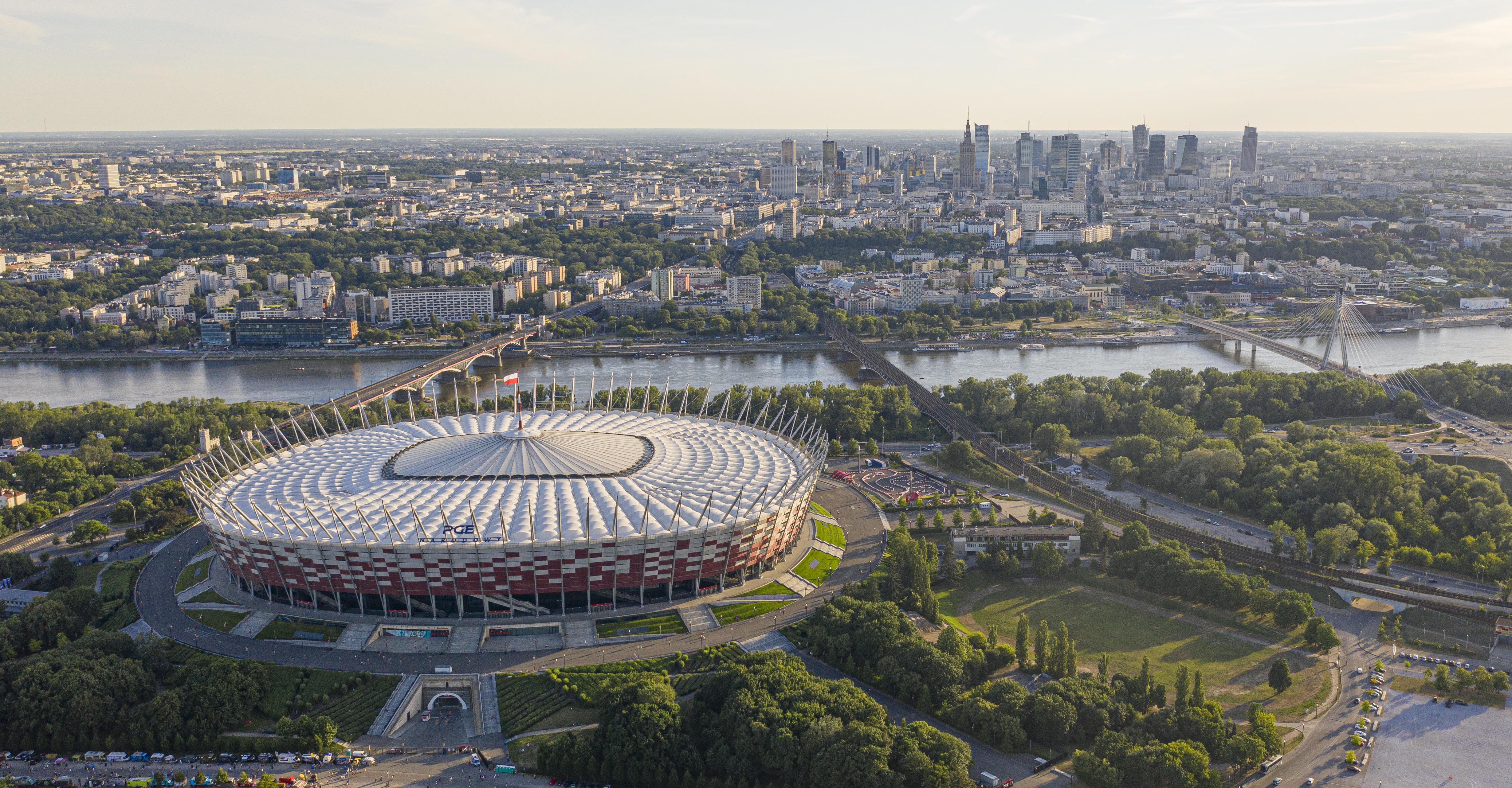
Home to Poland’s national football team, Stadion PGE Narodowy is a state-of-the-art multi-purpose venue that has redefined Warsaw’s skyline. Officially opened in 2012 for the UEFA European Championship, this stadium was designed to serve as Poland’s premier sports and entertainment destination. With a capacity of 58,580 spectators, it is the largest stadium in Poland, regularly hosting international football matches, concerts, and a wide variety of events. One of its most remarkable features is its fully retractable roof, which is supported by a central spire towering 70 meters above the pitch. This design allows it to host matches even in Poland’s harsh winter conditions, making it an all-season venue. The seating system is also adaptable, allowing the stadium to transition between football games, motorsports competitions, and large-scale concerts. In the past, it has been the stage for international artists like The Rolling Stones, Metallica, and Beyoncé, proving its versatility beyond sports.
22. Timsah Arena – The Crocodile Stadium (Bursa, Turkey)
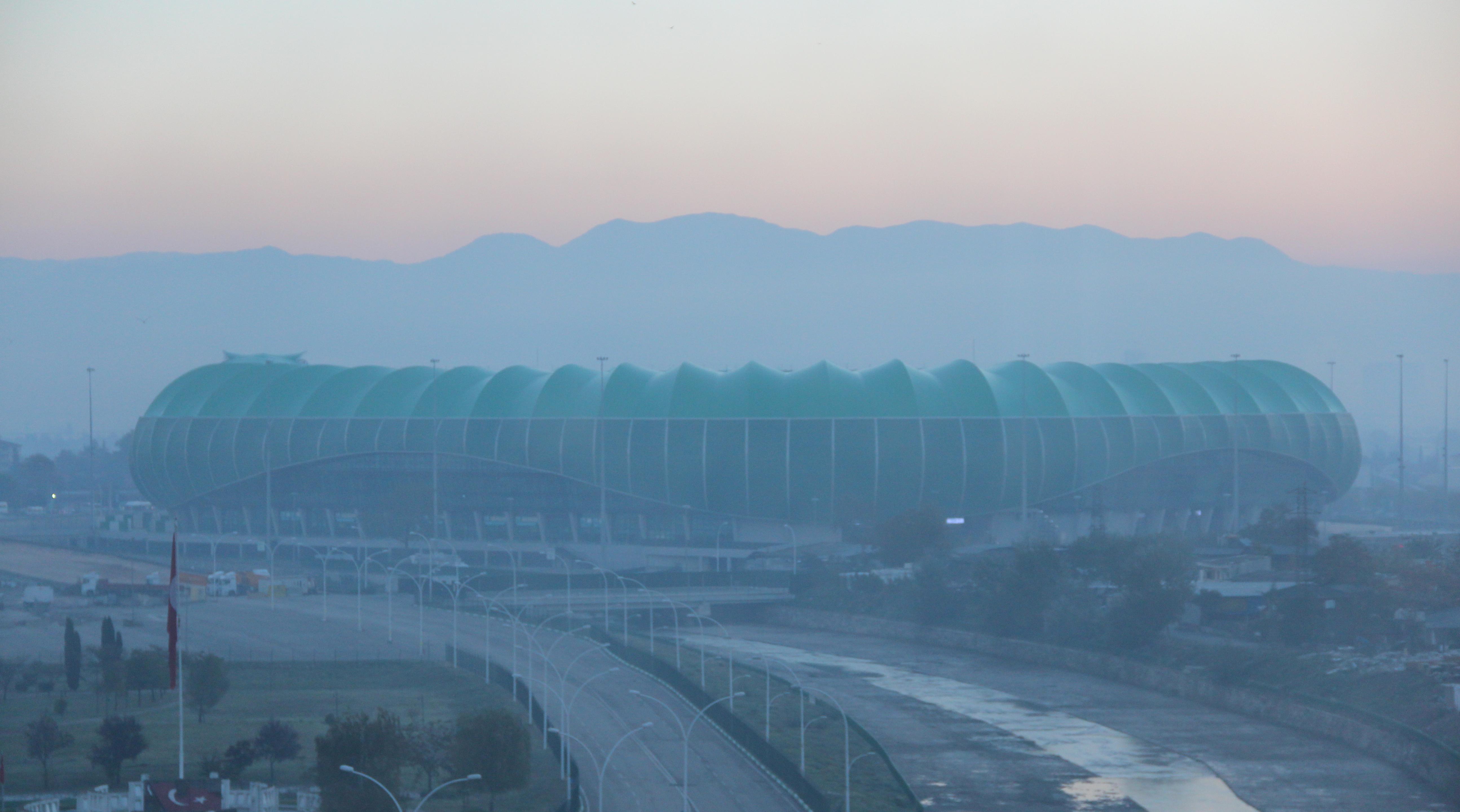
When it comes to creative stadium designs, Timsah Arena in Bursa, Turkey, stands in a league of its own. Built in the shape of a giant crocodile, this stadium is a visual spectacle that perfectly embodies the identity of Bursaspor, whose nickname is the Green Crocodiles. Unlike conventional stadiums that focus on sleek and modern designs, Timsah Arena fully embraces thematic architecture, turning an ordinary football venue into a bold, artistic statement. The stadium’s exterior features massive green “scales”, giving it the appearance of a real-life crocodile. But what truly sets it apart is its jaw-dropping entrance, which is shaped like a crocodile’s open mouth, complete with sharp white “teeth” and green lighting to enhance the effect. This daring and imaginative design makes it one of the most distinctive stadiums in the world, attracting visitors even when there are no matches being played.
The Stadiums of Tomorrow Start Today
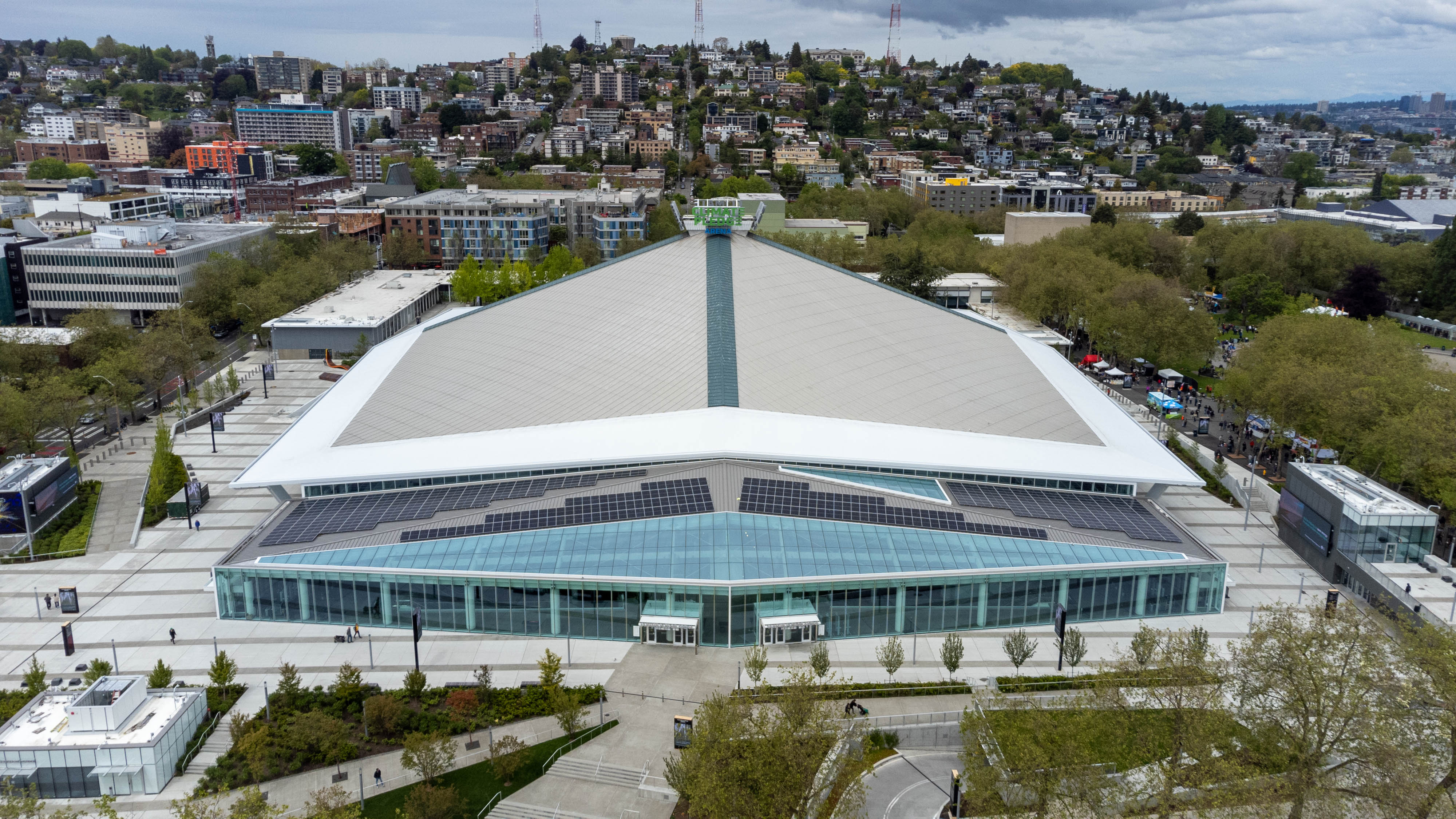
The evolution of stadiums is no longer about bigger seating capacities or flashy scoreboards—it’s about creating unforgettable experiences, integrating smart technology, and embracing sustainability. These 22 groundbreaking stadiums prove that modern sports venues can be climate-conscious, digitally connected, and architecturally stunning, all while offering fans an immersive, next-level experience. As sports, entertainment, and technology continue to merge, the stadiums of the future will be smarter, greener, and more adaptable than ever. We can expect more AI-driven crowd control, fully interactive digital environments, and zero-carbon emissions stadiums that redefine what it means to attend a live event. The rise of multi-purpose venues ensures that these spaces are no longer limited to seasonal use—they are year-round hubs of entertainment, culture, and community engagement. These stadiums don’t just host games—they shape cities, bring people together, and set new standards for the global sports industry. Welcome to the future of stadium design—where innovation meets passion, and where the next great sporting moments will unfold.








